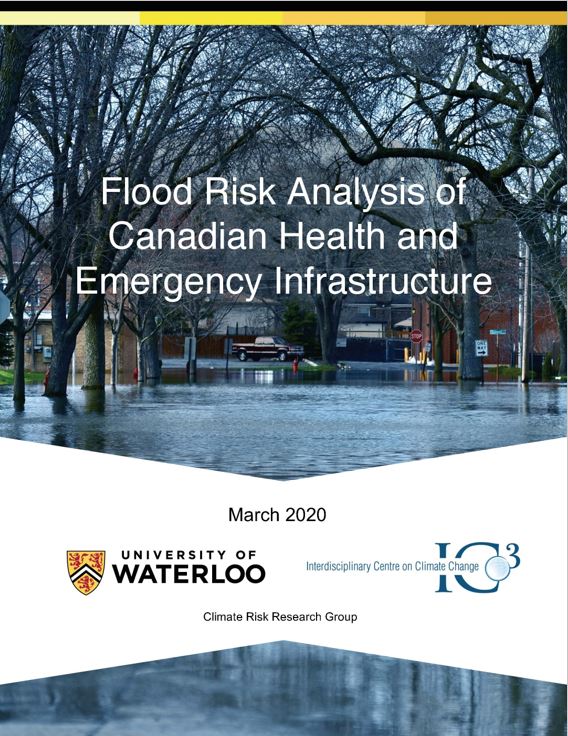March 2020
Daniel Scott
Andrea Minano
Liton Chakraborty
Daniel Henstra
Jason Thistlethwaite
Yuvna Apajee
This report identifies whether, and to what extent, health and emergency (H&E) service facilities across Canadian provinces and territories are exposed to fluvial, pluvial and coastal flood hazards. The purpose of the analysis was to improve evidence-based decision-making processes for critical infrastructure resilience. To detect the number of H&E service facilities at risk across Canada, a spatial analysis was performed in ArcGIS by employing flood hazards data for Canada from JBA, Canadian H&E facility location data from DMTI Spatial Inc. (Canada’s market leader in location data), and the 2016 Canadian census boundary files from Statistics Canada. By following the U.S. Geological Survey’s definitions of flood recurrence intervals of 20-, 50-, 100-, and 200-years, and their corresponding annual exceedance probability scheme (USGS, 2019), flood hazard exposure was categorized into five groups, including very high, high, moderate, low, and very low risk. Finally, the robustness of this project’s findings was tested by comparing the results of JBA flood hazard data with selected government flood datasets used by the Province of Alberta, the City of Calgary, and the Toronto and Region Conservation Authority (CA) to establish building and development regulations on floodplains (i.e., fluvial flood hazard areas).
Acknowledgement: Health Canada has funded this project. The views expressed herein do not necessarily represent the views of Health Canada.
